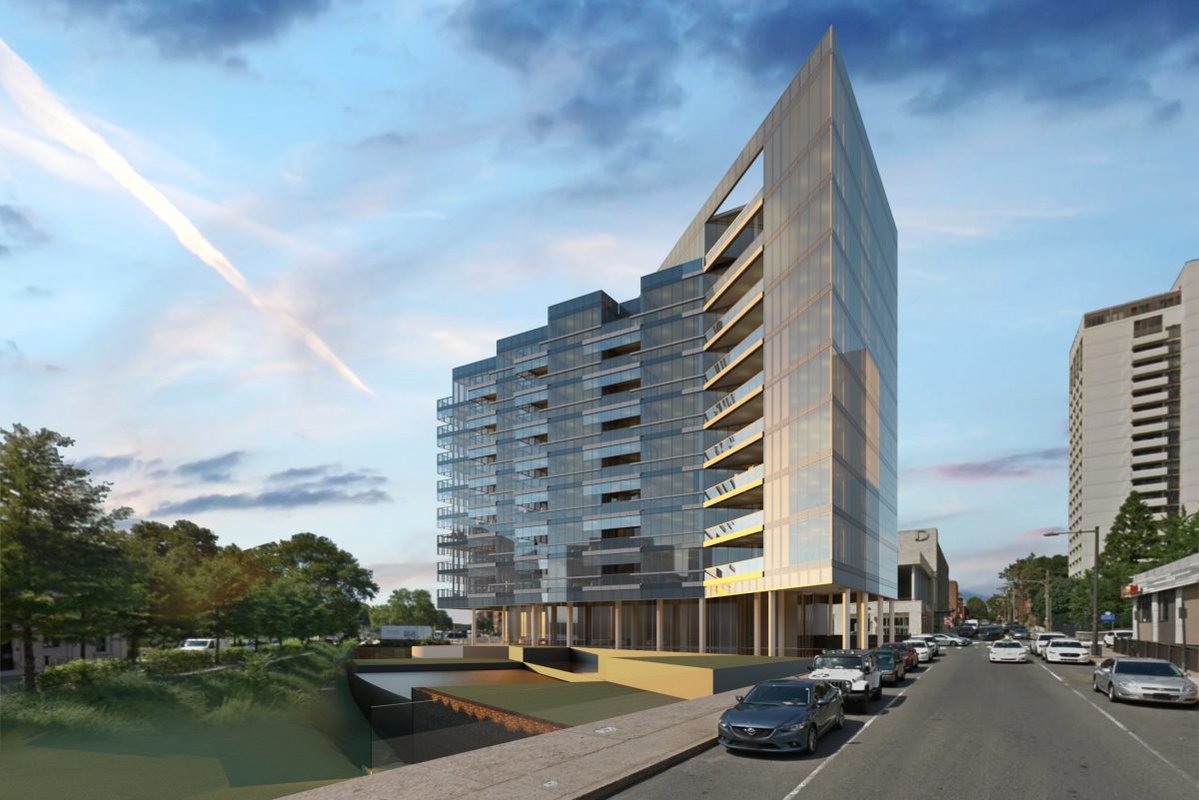I attended a neighborhood association meeting last night to hear about a proposed apartment building: 2100 Hamilton Street in the Benjamin Franklin Parkway area of Philadelphia. The “review” was a matter of courtesy on the part of the developer since he had just received his building permit from the city. The animated questions from the audience concerned practical issues: how would traffic be handled, would the building block views, would the developer repair the broken sidewalk, where would visitors park. In truth, the 10-story condominium with only 33 units would not be a major burden on the neighborhood. Sadly, nor would it be much of an adornment. The nineteenth and early twentieth century residential architecture of downtown Philadelphia is a rich visual feast that provides many pleasures to the passerby, whether the building is a modest rowhouse, an apartment building, or a renovated factory. The richness is a result of the materials and ornamental details: a decorated door surround, a cast-iron curlicue, a fanciful gable. 2100 Hamilton Street exhibits none of these features. Briefly put, like almost all new buildings in downtown Philadelphia, it is a glass box. Nothing but glass, except for some rather grim metal panels on the north side. “Ornament is a crime,” in the Modernist lexicon, so the glass box, which does away with not only ornament but also detail, is perfect. In a sense, such buildings are like large vehicles—in this case a Lexus, as this is luxury housing—parked on the street. There were no questions from the audience last evening about the building’s appearance. I suppose we are becoming accustomed to this shiny new vernacular. Or just resigned.
Photo: 2100 Hamilton Street, Cecil Baker & Partners, Architects


